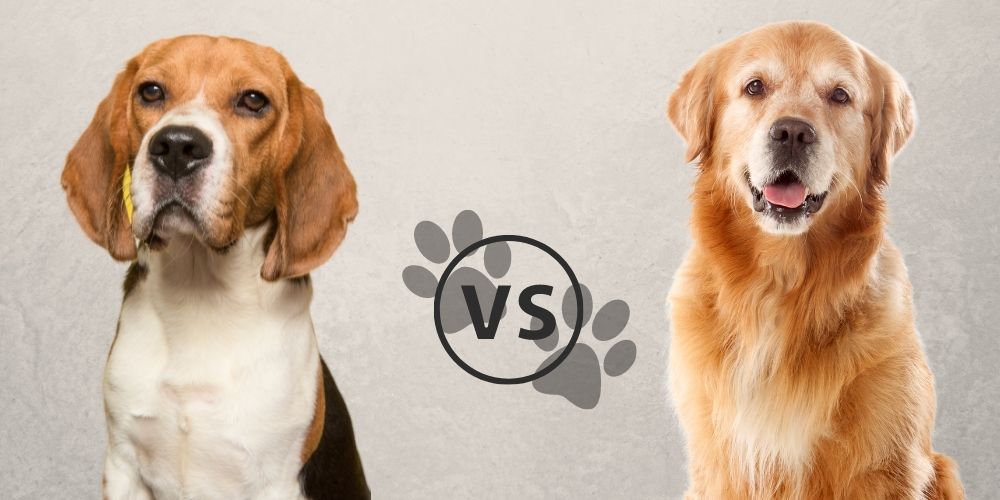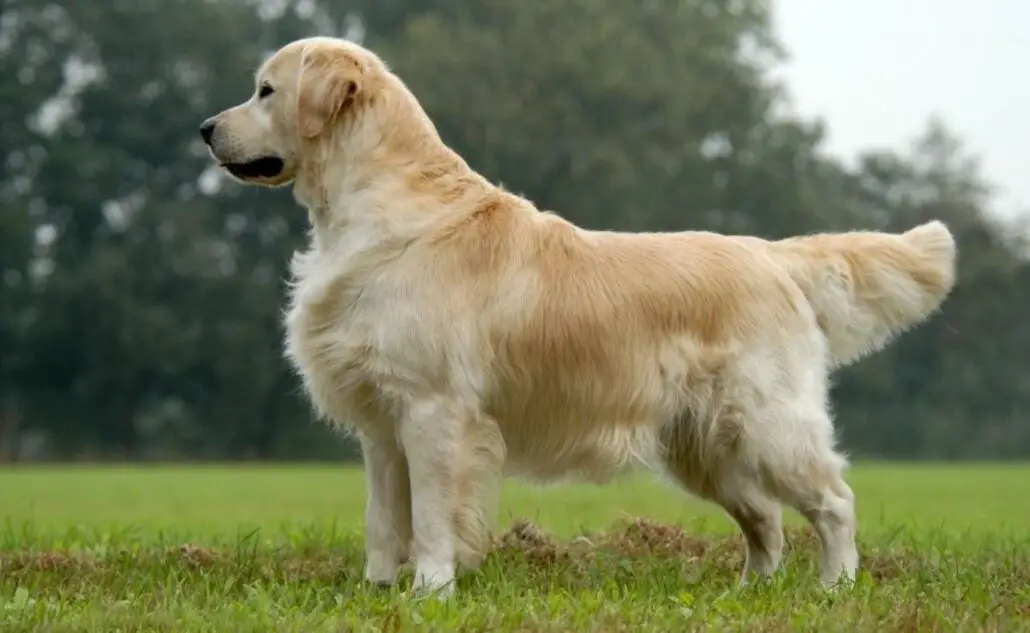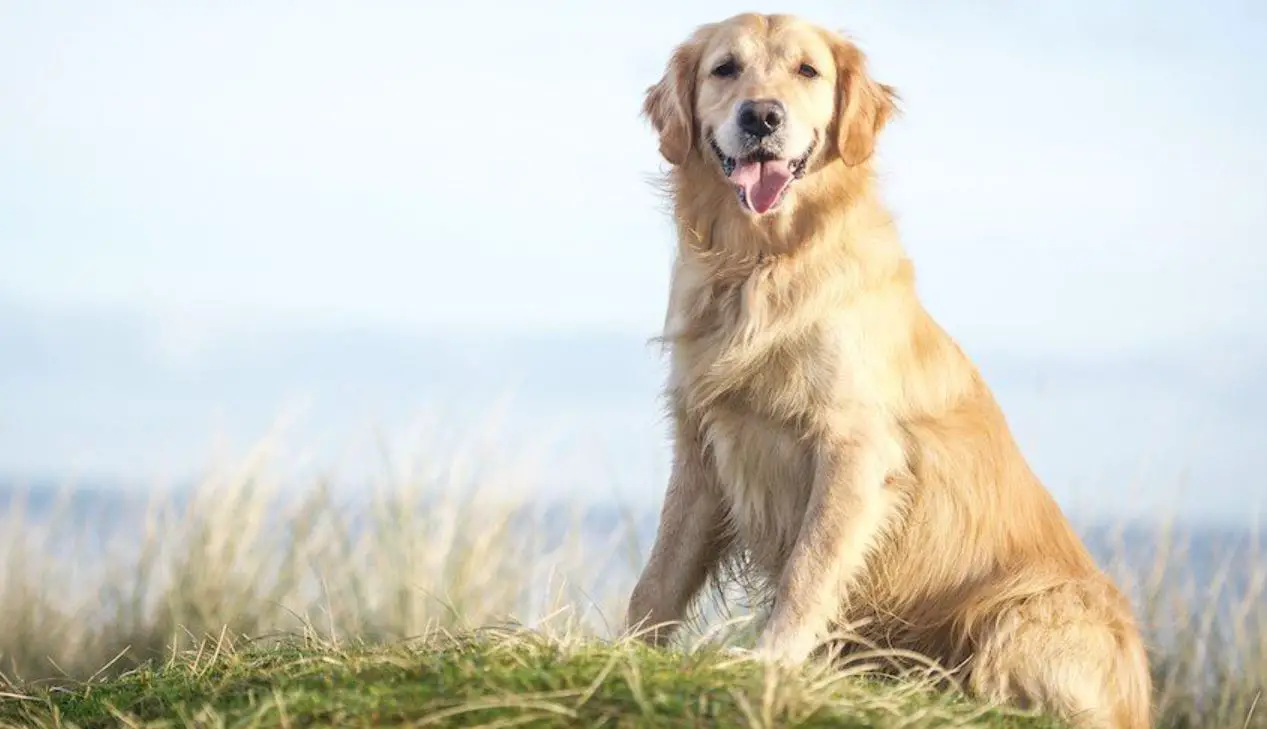Beagle vs. Golden Retriever Breed Guide – What Is The Best Breed For You

The Beagle and the Golden Retriever are popular breeds.
When people are searching for a family dog or one good with kids, both of these dogs come to mind. But you have to decide which breed would fit in with your family. Hopefully, this article will help with that decision.
Key Similarities
Both breeds are highly energetic and make an excellent pet for people who have children and people of all ages.
Both dogs need regular grooming, but the Beagle needs less brushing than the Golden Retriever. Beagles can be brushed about twice a week, whereas Goldens need to be brushed daily. In addition, both can use trips to the groomers for nail trims and finer grooming.
The Beagle and the Golden Retriever have coats that repel water when wet.
Both dogs shed year-round.
Key Differences
The Beagle is a smaller dog that weighs from 18 to 30 pounds. Plus, the Beagle is between 13 to 15 inches tall, and the females may be smaller.
The Golden Retriever weighs between 55 to 75 pounds and measures about 20 to 24 inches tall.
The Beagle makes a better dog for apartment living if you don’t have a big home. While the Golden Retriever is better suited to a house with a fenced-in yard.
Beagles can live an average of 10 to 15 years, while a Golden Retrievers’ life expectancy is between 10 to 12 years.
Pros of Owning a Beagle
A Beagle is a happy-go-lucky dog that is a sweet, excitable, friendly, and funny dog. He would enjoy being involved in all family activities.
Pros of Owning a Golden Retriever
Highly intelligent, these dogs are easy to train. The Golden Retriever gets along with everyone and is eager to please.

All About the Beagle

Beagles are from the U.K. and were bred to hunt hare and deer. “Beagle” is thought to be French for “loudmouth.”
The name fits perfectly because of the baying and howling a beagle does when he catches a scent.
All About the Golden Retriever

The Golden Retriever came from Scotland and originated in the 1800s. The breed was designed for hunting ducks and waterfowl.
Golden Retrievers are excellent hunting dogs but are wonderful family dogs as well.
History:
These dogs were brought over to the United States during the 20th century. The breed found favor with families quickly.
They are also becoming popular as mixed breeds, for example, when mixed with a corgi.
Beagles also work as scent detection dogs. They can be found in airports sniffing illegal food items, drugs, and weapons.
Size and appearance:
Beagles can come in two sizes but never taller than 15 inches. Your Beagle can be either 13 inches height to the shoulder or 15 inches height to the shoulder.
The smaller type of Beagle weighs between 22 to 30 pounds. The larger Beagle can weigh up to 35 pounds.
A beagle can look similar to a Foxhound but are smaller. The Beagle and the Foxhound share strong jaws, floppy ears, tricolor coats with medium-length fur.
Beagles are muscular, thick dogs with straight backs and deep chests. Their tails are relatively long, carried high, and usually always white. These dogs have domed heads with broad noses and a square-shaped muzzle. The Beagles ears are set low on the head and floppy.
The most common coat colors on a Beagle are black, tan, and white. But there is a range of other colors that their coat can be as well. These colors are lemon and white, orange and white, brown and white, red and white, chocolate tricolor, and tan and white.
Lifespan:
Your Beagle can live between 10-15 years when taken care of properly.
Guard dog or family pet:
A Beagle does not make a good guard dog because every new person is their friend.
Your pet can be trained to bark when someone is knocking, but then the person will be a friend for life when they enter the house.
History:
The British lords in Scotland loved hunting and needed an excellent hunting dog.
So, the Golden Retriever was bred for that purpose. But these dogs are also well-behaved and naturally friendly, so they have become known as family-friendly dogs.
Size And Appearance:
These are large dogs between 20 to 25 inches in height and 55 to 75 pounds in weight.
Their coat is either straight or wavy, with the color being Golden, Light Golden, or Dark Golden.
Goldens move with a powerful, smooth gait with a feathery tail carried high. Heavy feathering is also across their chest, the backs of the dog’s legs, and the tail.
These dogs can be leaner and sporty or broad and denser in their physique.
Lifespan:
A Golden Retriever’s life span is between 10 to 12 years.
Guard Dog Or Family Pet:
A Golden Retriever can make a good guard dog. Because this breed isn’t naturally aggressive, though, it may require some training.
Also, since a Golden Retriever is a large dog, they can look very intimidating.
Because this breed is an intelligent breed, they can be taught to be a guardian for you and your family.
They know when something is wrong or when someone means to harm the family members. Because they are such loyal dogs, Golden Retrievers won’t run away when danger threatens.
But the downside is that Golden Retrievers aren’t barkers, so your dog may not alert you to the fact that there’s an intruder right away.
Plus, because being friendly is in its nature, the dog is more likely to stand behind you, not in front of you, if he isn’t trained to do so.
Basically, Golden Retrievers are family dogs but can be trained to be guard dogs if used with the command technique.
Beagle In More Detail

Temperament And Behavior:
Your Beagle will love and expect attention. This breed is an excellent companion dog and is quite animated. Beagles get along well with kids and other pets and prefer to be around others.
If left alone too long, your may howl and become destructive. Because this breed is so stubborn and bark excessively, housebreaking may be an issue unless you’re persistent and have patience.
This breed was bred to hunt, so your dog will be naturally curious about everything. However, your dog can be a handful since he will be led by his nose. In addition, beagles are prone to roaming, so having a sturdy fence around your yard is essential.
Training And Behavior:
Beagles can be more challenging to train because of having such an independent nature. But because they are intelligent dogs, positive and reward-based training methods will get the best results.
In addition, this breed responds well to clicker training and using food to teach commands.
Keep in mind that if your dog becomes scent-focused, he can lose interest in anything you’re trying to teach him. He can follow his nose right out of your yard and become lost. Always be sure to train your dog on a leash so he can’t develop the idea that leaving in the middle of a training session is acceptable.
Exercise needs:
If you give your dog about an hour or so of exercise a day, it should work well. If you take your dog on two walks a day, it should keep him happy and fit. If possible, your Beagle should have access to a fenced-in yard where he can run around off-leash.
Shedding, grooming, and maintenance:

Your Beagle will shed low to medium even with his short sleek coat. Your pup will need to be brushed every couple of days to remove loose hair.
Plus, this breed does have a distinct doggy smell, and your dog will love to roll in disgusting smelly stuff. So, bathing frequently will be a must.
Because your dog’s ears hang down, he’ll be suspectable to ear infections. So first, clean your pet’s ears with a vet-approved ear cleaning solution. Then, use a puffy cotton ball to wipe out your dog’s ear. Don’t use a Q-tip, and don’t go any deeper than the first knuckle of your finger into your dog’s ear.
Trim your Beagle’s nails every few weeks to keep him comfortable. Plus, it protects your floor from being damaged. If you can’t do it, you can have your vet do it or a professional groomer.
Health Issues:
As with all dogs, there could be some health issues that crop up according to your dog’s breed. He could get Cherry Eye, Chinese Beagle Syndrome, Distichiasis, Epilepsy, Glaucoma, Hip Dysplasia, Hypothyroidism, Intervertebral Disk Disease, Patellar Luxation, and Progressive Retinal Atrophy.
When you acquire your puppy from a breeder, always ask to be shown a valid veterinary screening certificate for both parents and grandparents. If the screening is clear, your dog shouldn’t inherit any congenital health issues.
Quick Facts:
Beagles are prone to obesity, so monitor their food intake. Also, keep trash cans and food on counters out of reach. Your dog will grab either at the first opportunity.
A Beagle’s price should cost anywhere between $500 to $2,000 if bought from a reputable breeder. Don’t buy one from a puppy mill because most puppies are unhealthy.
Beagles love to dig and, if left alone, can decimate a garden or a front lawn.
A Beagle is one of the most vocal dog breeds around, with three different barks. First, the standard bark, a yodel bark called a bay used for hunting, and the last is a howl.
Golden Retrievers In More Detail

Temperament And Behavior:
Golden Retrievers are naturally well-behaved and friendly. Their temperament is playful, gentle, and outgoing. Plus, this breed is intelligent and devoted to its family.
A Golden Retriever gets along with other animals. However, these dogs do exuberant jumps on people when young. Plus, this breed does tend to mouthiness and likes to carry things around.
Training and obedience:
A Golden Retriever has a puppy frame of mind until he is over three years old. Early training is essential so you can instill good manners and calmness.
Even if he is eager to please, your dog will be distracted by the wonderful new sights and smells, so patience is a must.
Exercise Needs:
These dogs are from the sporting class, so they need exercise. If your dog can’t vent his energy and you find him interesting things to do, then he’ll find them. This breed has an extremely high energy level and a high exercise level.
An hour of exercise at least will help keep your dog’s exuberance under control. After that, your dog will love to retrieve stuff and bring back just about anything thrown to him.
Shedding, grooming, and maintenance:

Golden retrievers shed a lot and often. They require regular brushing to keep ahead of the hair shedding.
Because the breed is a hunting and waterfowl dog, the outer coat is dense and will repel water.
You will regularly need to brush and comb your dog to avoid his coat getting matted and tangled. Some dogs of this breed have a medium-length coat that isn’t as hard to groom. Other dogs have a heavier coat with lots of feathering.
Plus, Goldens need to be clipped and scissored occasionally, so a trip to the groomers may be necessary to keep your dog sanitary. Keeping nails trimmed is also a part of the grooming. These dogs shed moderately in the winter and summer but heavily in the spring and fall.
Because this breed has fold-over ears, they are prone to ear infections. The ears create an environment for bacteria and fungus to grow. It appears as black dirt-looking particles with a terrible odor. Simply gently wipe the outer ear with a cotton ball that’s been dampened with pH-balanced ear cleaner.
Health issues:
Golden Retrievers are prone to cancer, heart problems, skin allergies, eye defects. Plus, they gain weight easily, so overfeeding should not be done. In addition, they are susceptible to bloat, hypothyroidism, and hip dysplasia.
Quick Facts:
These dogs have a distinctive doggy odor and produce a lot of dander.
The breed is a good match for children, other dogs, cats, families, and seniors. They are excellent dogs for first-time pet owners, and these dogs love water.
The cost of a Golden Retriever is about $500.


